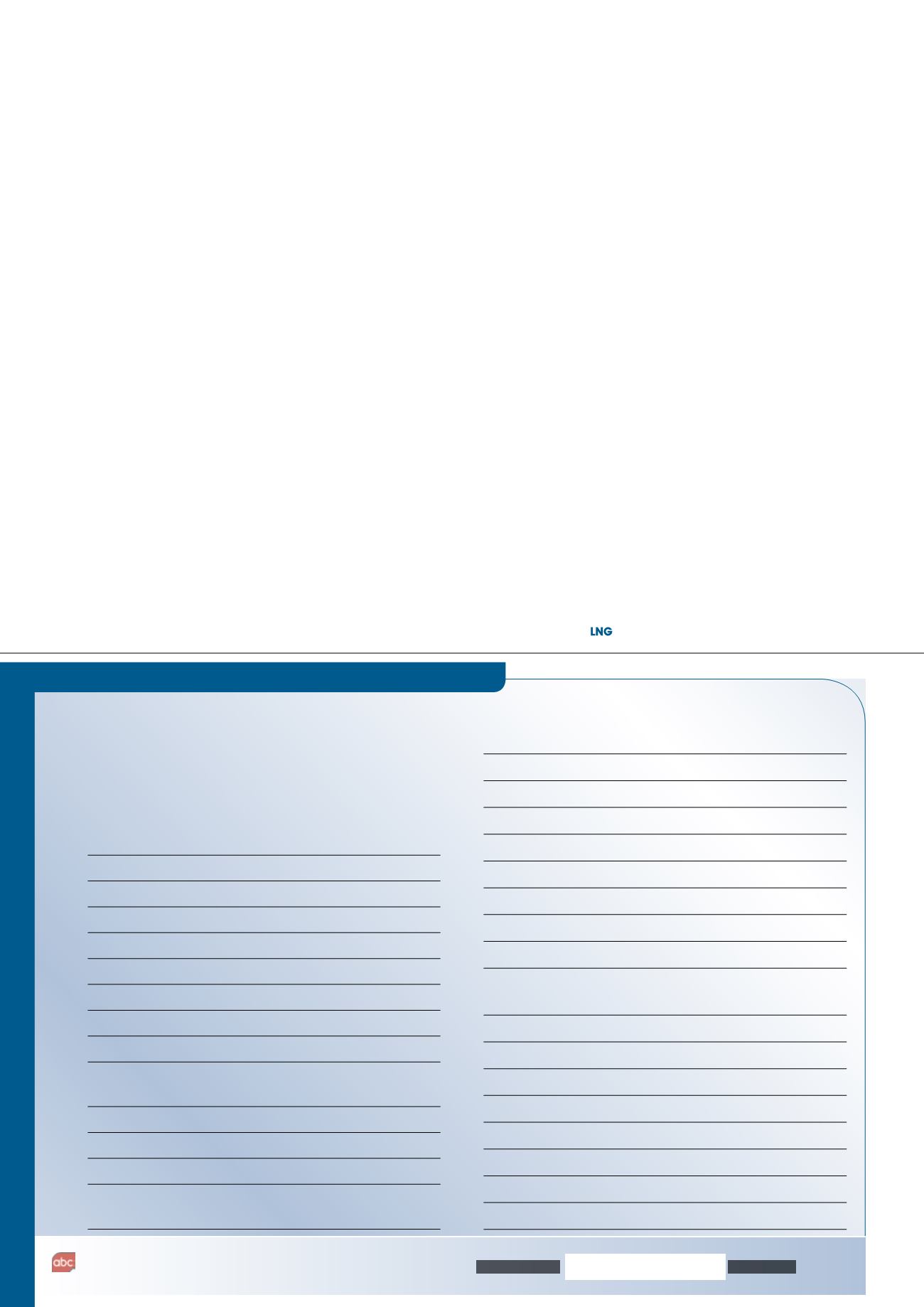
installed, letting natural light into the control room and giving the
operations team a view of the terminal, as well as improving the
connection to the outside world that they were controlling
(Figure 4). In addition to this, Grain LNG took advantage of
previously underutilised space, re-routed services, raised the
control room ceiling, and installed custom LED lighting to create
a large open feel to the environment. This was a stark contrast to
the dark ‘box’ that the technicians operated from previously.
Welfare facilities, such as the heating, ventilating and air
conditioning (HVAC), kitchen, breakout room, showers and wet
room, were all refurbished and fitted with new equipment. Each
technician now had a wet and dry locker, as well as their own
desk and allocated areas for hard hats.
Making it happen
Grain LNG is a 24/7 operation and did not have the luxury of a
shutdown. This upgrade needed to take place safely and without
interruption to operations. The programme involved moving
the operations team to a temporary control room, as well as
providing additional welfare facilities, such as changing and
toilets.
The project was in the making for approximately 18 months
before Grain LNG actually began to cutover to the temporary
control room. This pre-work included a Human Factors
Integration Plan (HFIP), an extremely detailed specification, a
tender process for the main contractor, and a vast amount of
offline testing of operator displays, desk layouts and potential
overviews, as well as design and build of ESD panels and
pre-cutover cabling. Once initiated, the operations teamwere
located in a temporary control room for approximately
four months (Figure 5).
Sustainability
The design ensured that areas that did not need to be disturbed
were not. Wherever possible, existing infrastructure was reused.
A detailed matrix was constructed to ensure that equipment was
re-used, recycled or donated to charity wherever possible. This
not only reduced cost, but also reduced waste directed to landfill
(Figure 6).
The items taken away from site were recycled with 98.8%of
material diverted from landfill.
The result
The project was a success and provided an optimised working
environment. Good lines of sight, a holistic view of the process,
nearby emergency response rooms and positive operator
engagement improved HVAC, lighting, welfare facilities and
security. Consequently, the operators’ morale was also improved.
Key learning points
Grain LNG spent a significant amount of time in Factory
Acceptance Testing (FAT) to ensure that the video wall and desks
worked perfectly from day one. It is essential that the operations
team buy in to the project. If the teamwent into the new control
room and something did not work, it would be unlikely they
would use it in the future.
Future
The control systems team are now improving the operations
training simulator, both by emulating the newmain control room
(MCR) hardware, as well as by virtualising the software to enable
faster updates and greater flexibility to stagemodifications and
sand box capability.
www.
lngindustry
.com
AD
INDEX
ADVERTISERS INDEX
LNG Industry is audited by the Audit Bureau of Circulations (ABC).
An audit certificate is available on request from our sales department.
45
th
Turbomachinery & 32
nd
Pump
Symposia
79
ABC
59
Air Products and Chemicals, Inc.
21
Bergen Pipe Supports
53
Braemar Engineering
OBC
CB&I
07
Chart Industries
09
Corban Energy Group
15
Cosmodyne
59
CWC’s 14
th
Americas Summit &
Exhibition
55
CWC’s LNG Fuels Summit
65
Elliott Group
29
Gastech 2017
67
GE Oil and Gas - Reciprocating
Compression
IFC
GTT
11
Hallwood Modular Buildings
41
HIMA
49
Howden Thomassen Compressors BV
02
ILTA 2016
71
Ingersoll Rand
41
International Registries, Inc.
72
JLA Loading Technology
27
Kobelco Compressors America, Inc.
IBC
Linde Engineering North America Inc.
OFC & 17
LNG Industry
45, 63 & 77
Mott MacDonald
39
Nikkiso Cryo
45
Parker Bestobell Marine
33
SNC-Lavalin
35
Temati B.V.
30
Tri Tool
63
Zwick Armaturen GmbH
04


